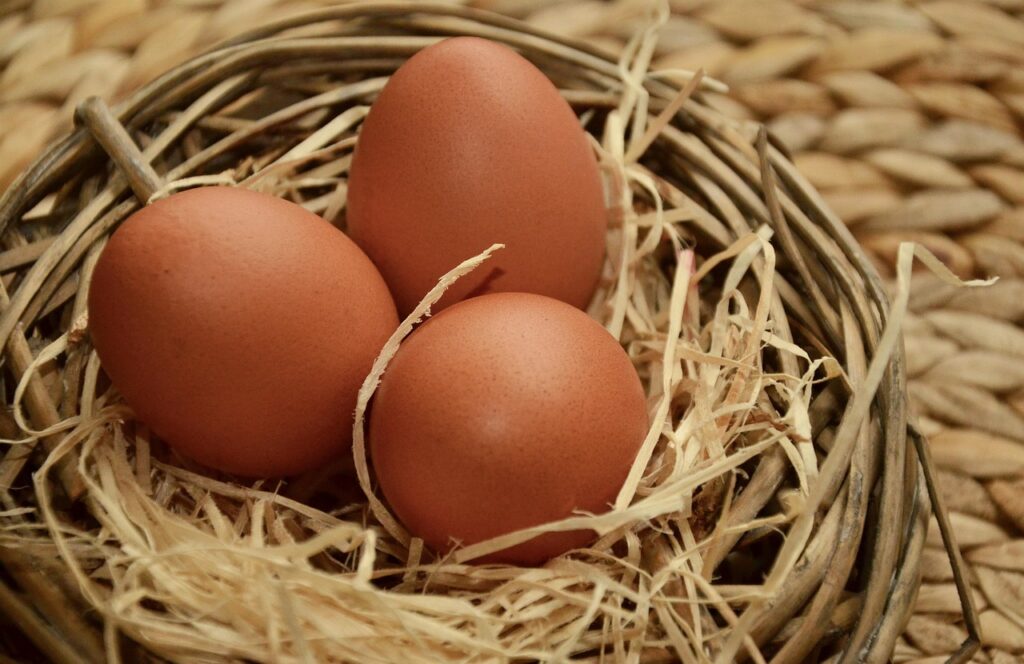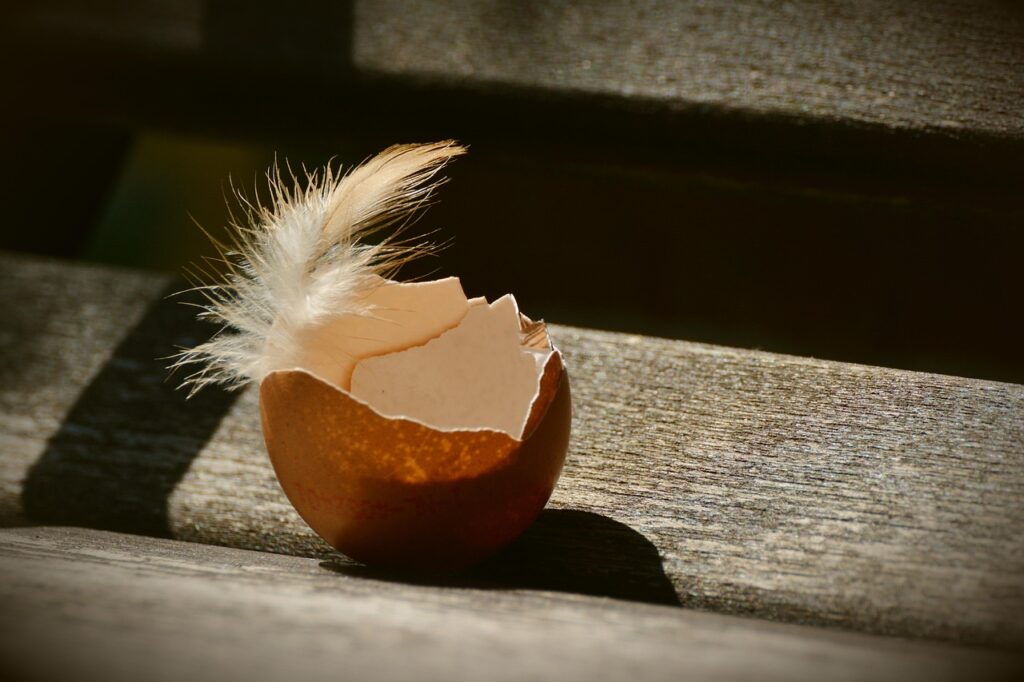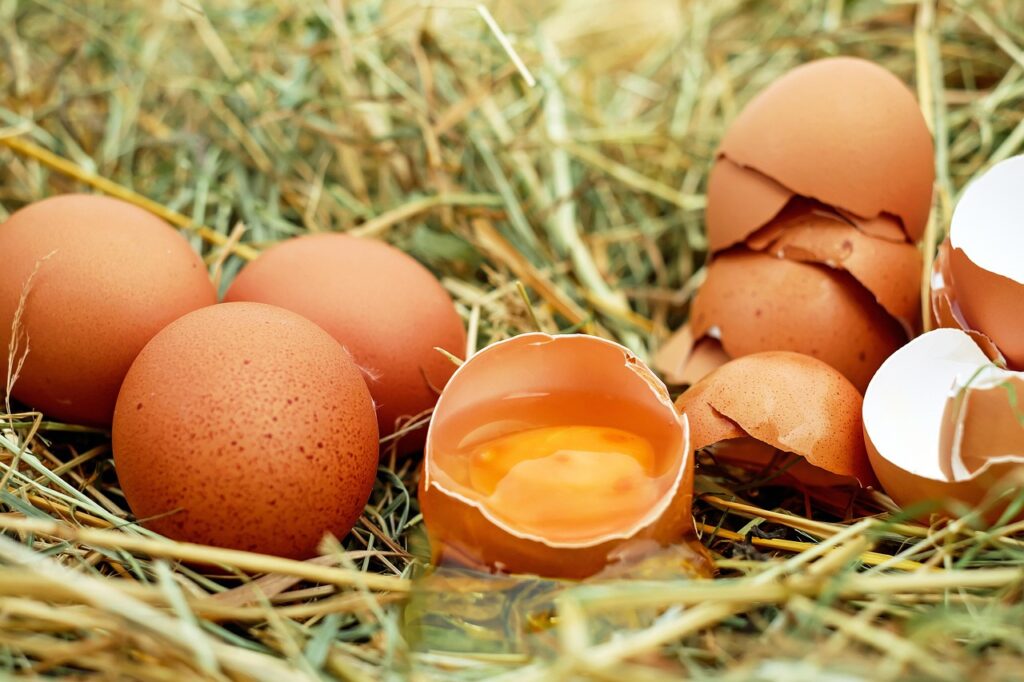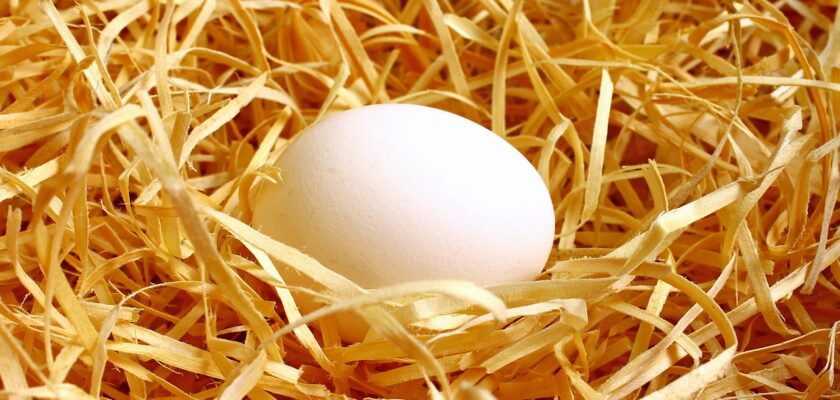Introduction to Egg Formation in Chickens
Egg production isn’t just an automatic process—it’s a response to hormones, light, and the hen’s health. Chickens are oviparous, meaning they lay eggs outside their bodies, which then hatch externally if fertilized. Hens don’t need a rooster to lay eggs, only to produce fertilized ones that can develop into chicks.
The reproductive system of a hen is triggered by light exposure, primarily natural daylight or artificial lighting, which sets off a hormonal chain reaction that begins the egg-forming cycle.

Image by congerdesign from Pixabay
Anatomy of a Hen’s Reproductive System
Understanding egg formation starts with the reproductive anatomy of hens. Here’s a breakdown of the main components involved:
- Ovary: Contains thousands of undeveloped yolks (ova)
- Oviduct: A 25–27 inch long tube where the egg forms
- Cloaca: The common passage for waste and egg laying
Ovary and Ovum Development
Only the left ovary in a hen is functional. This ovary holds thousands of ova, which are potential yolks. Once a yolk matures, it breaks out of its follicle and is captured by the infundibulum. This release is similar to ovulation in humans.
The Oviduct: Egg Factory Inside the Hen
The oviduct is the egg assembly line, and it’s divided into five distinct parts:
1. Infundibulum: Fertilization Hub (15 minutes)
- Function: Captures the yolk after ovulation.
- Fertilization: If a rooster has mated with the hen, this is where sperm meets the yolk.
2. Magnum: Albumen (Egg White) Production (3 hours)
- Function: Adds layers of albumen, the egg white.
- Fun fact: The thickest albumen is added here, protecting the yolk and aiding in embryonic development (if fertilized).
3. Isthmus: Inner and Outer Membranes (1.5 hours)
- Adds two protective membranes around the albumen
- These membranes help block bacteria and retain moisture
4. Shell Gland (Uterus): Shell Formation (20 hours)
- Most time-consuming stage
- Deposits calcium carbonate, forming the hard outer shell
- Determines shell color (white or brown), depending on breed
5. Vagina and Cloaca: Final Exit Point
- Once the shell is complete, the egg passes through the vagina and is laid via the cloaca
- The hen’s body rotates the egg before laying, ensuring it exits large end first

Image by congerdesign from Pixabay
Eggshell Formation: The Calcium Story
Shell formation demands significant calcium resources. Hens extract calcium from their diet, and if insufficient, from their bones. A healthy hen can lay 300+ eggs a year, which makes dietary supplementation essential.
- Shell strength depends on calcium absorption and genetic traits.
- Oyster shells and limestone are common supplements for laying hens.
How Long Does It Take to Form an Egg?
The process takes 24–26 hours, and typically:
- A new yolk begins developing about 30 minutes after the previous egg is laid.
- A hen may lay an egg daily, though productivity depends on breed, health, and environment.
What Happens if the Egg is Fertilized?
If a rooster has mated with the hen:
- Sperm can survive up to 2 weeks in the hen’s reproductive tract.
- The yolk is fertilized in the infundibulum.
- After being laid, a fertilized egg can become a chick if incubated properly.
Without fertilization, the egg is just food—what we usually eat.

Nutritional Needs for Healthy Egg Production
Diet plays a massive role. Key nutrients include:
- Protein: For albumen and yolk development
- Calcium: For shell strength
- Vitamin D3: For calcium absorption
- Clean water: Essential for hydration and egg production
Environmental Factors Affecting Egg Formation
Several external factors can affect laying frequency and egg quality:
- Daylight exposure: Hens need 14–16 hours of light daily
- Temperature: Extreme heat or cold affects egg output
- Stressors: Predator threats, noisy environments, or overcrowding reduce productivity
Common Issues in Egg Laying
Hens occasionally experience:
- Soft-shelled eggs: Usually due to calcium deficiency
- Egg binding: When the egg gets stuck, a medical emergency
- Double yolks: More common in young hens

Image by Steve Buissinne from Pixabay
Human Intervention: Selective Breeding & Hormones
Over centuries, humans have bred hens for:
- Higher productivity
- Bigger eggs
- More consistent laying
While hormones are not used in poultry egg production in many countries (including the U.S.), selective breeding has dramatically altered modern layers’ biology.
Fun Facts About Chicken Eggs
- Brown and white eggs have no nutritional difference
- A hen turns her egg up to 50 times daily during incubation
- Some chickens can lay blue or green eggs (e.g., Araucana breed)
Must-Know FAQs
1. How many eggs does a hen lay in her lifetime?
A healthy hen can lay 600–1,200 eggs over her laying years.
2. Why do eggs have different shell colors?
Shell color is genetic. White Leghorns lay white eggs, while Rhode Island Reds lay brown ones.
3. Can you eat fertilized eggs?
Yes. Unless incubated, fertilized eggs are safe to eat and virtually identical in taste.
4. What causes blood spots in eggs?
A ruptured blood vessel in the ovary or oviduct—harmless and not a sign of fertilization.
5. Do older hens lay fewer eggs?
Yes. Egg production declines after 2-3 years, though hens may still lay occasionally.
6. How can you tell if an egg is fresh?
Place it in water. Fresh eggs sink, while older eggs float due to air pocket expansion.

Conclusion: Nature’s Perfect Design
Chicken egg formation is a masterpiece of evolutionary design. From hormone-triggered yolk release to the meticulous layering of membranes and shell, this 24-hour process is a biological ballet. Whether you’re a backyard chicken keeper or just an egg lover, understanding how chicken eggs form gives new appreciation to this everyday marvel.
